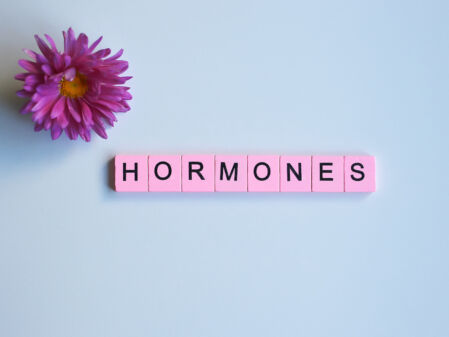
Spider and varicose veins, long thought to be the plague of elderly women, can strike at nearly any age. One of the lesser known risk factors for these visible veins is hormonal fluctuations, particularly those that occur during puberty, pregnancy and menopause. The relationship between your vascular system and your hormone levels is a rather complex one that has yet to be fully understood. However, we do have some facts about this association to help explain why spider and varicose veins may make an appearance during these stages of life.
The Function of Hormones
Our bodies produce a number of different hormones, which contribute to the efficient operation of many body systems. When hormones get out of balance, a common occurrence during the times of life listed above, the result can be far-reaching. Moodiness and depression, weight gain and sleep disruptions are just a few of the problems caused by hormonal imbalances. During menopause, hormone fluctuations may also lead to symptoms like hot flashes and memory lapses. The appearance of spider and varicose veins are also a common side effect of hormone changes.
How Hormones Affect Your Veins
A drop in hormone levels, particularly progesterone, may relax vein walls, allowing more blood to build up inside. This can put additional pressure on the valves inside the vein that are responsible for moving blood in a single direction back to the heart. When you couple the increased blood flow with the difficult task veins of the lower leg have in pushing blood against gravity up to the heart, it becomes clearer as to why additional blood accumulation can create a problem in these lower vessels.
The Double Whammy in Pregnancy
During pregnancy, fluctuating hormones become just a piece of the varicose vein puzzle. During pregnancy, blood flow increases in the body so that sufficient oxygen and nutrients can get to the growing baby inside. Pregnancy also means an expanding uterus and increased pounds, which can lead to more pressure on the lower leg veins and an even higher risk of varicose veins. The good news is many varicose veins that appear during pregnancy will subside on their own after your little bundle of joy arrives. The visible vessels that linger can be addressed with minimally-invasive treatment options performed right in your doctor’s office.
Treatment Options for Spider and Varicose Veins
When varicose and spider veins do not improve on their own, treatment may be necessary to eliminate unsightly veins and the uncomfortable symptoms that sometimes accompany them. At Center for Vein Restoration, Dr. Carabasi offers revolutionary vein treatments that use innovative technology like radiofrequency and lasers to remove affected veins with minimal discomfort and downtime. To learn more about your options in spider and varicose vein treatment today, contact Center for Vein Restoration.